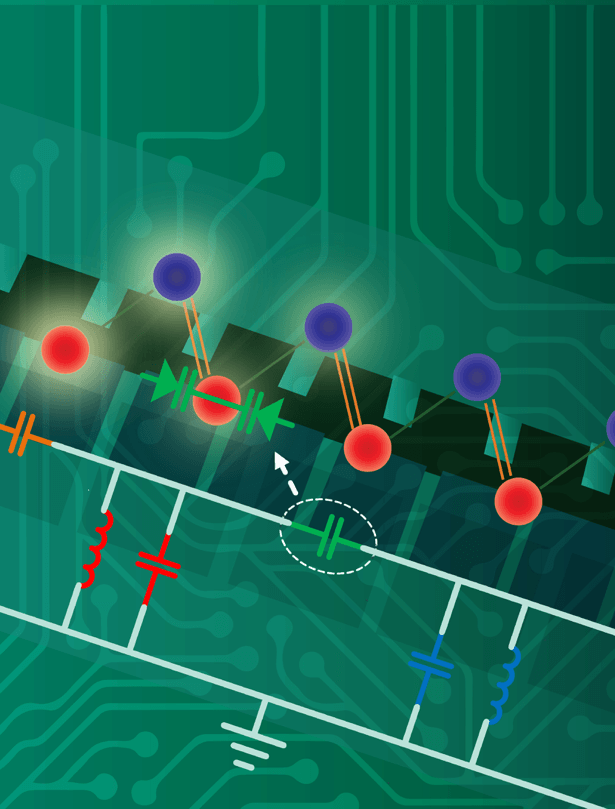Mar 12 2018
People are becoming progressively dependent on their mobile phones, tablets, and other portable gadgets that help them steer through everyday life. But these gadgets are susceptible to failure, frequently caused by small defects in their intricate electronics, which can be due to regular use.
Recently, a paper in Nature Electronics describes an innovation from researchers at the Advanced Science Research Center (ASRC) at The Graduate Center of The City University of New York that provides strong protection against circuitry damage that impacts signal transmission.
 Researchers used nonlinear resonators to mold a circuit array whose function proved to be inherently robust against defects that would normally interrupt signal transmission. (Image credit: Advanced Science Research Center, GC/CUNY)
Researchers used nonlinear resonators to mold a circuit array whose function proved to be inherently robust against defects that would normally interrupt signal transmission. (Image credit: Advanced Science Research Center, GC/CUNY)
The innovation was achieved in the lab of Andrea Alù, director of the ASRC’s Photonics Initiative. Alù and his colleagues from The City College of New York, University of Texas at Austin and Tel Aviv University were inspired by the seminal study of three British scientists who won the 2016 Noble Prize in Physics for their efforts, which teased out that specific properties of matter (such as electrical conductivity) can be well-kept in certain materials regardless of continuous variations in the matter’s shape or form. This concept is related to topology—a branch of mathematics that examines the properties of space that are well-kept under continuous deformations.
In the past few years there has been a strong interest in translating this concept of matter topology from material science to light propagation. We achieved two goals with this project: First, we showed that we can use the science of topology to facilitate robust electromagnetic-wave propagation in electronics and circuit components. Second, we showed that the inherent robustness associated with these topological phenomena can be self-induced by the signal traveling in the circuit, and that we can achieve this robustness using suitably tailored nonlinearities in circuit arrays.
Andrea Alù
To realize their goals, the team used nonlinear resonators to mold a band-diagram of the circuit array. The array was built so that a variation in signal intensity could trigger a change in the band diagram’s topology. For low signal intensities, the electronic circuit was engineered to support a minor topology, and thus provide no protection from defects. Here, as the defects were added into the array, the functionality and the signal transmission of the circuit were negatively impacted.
As the voltage was raised over a specific threshold, however, the band-diagram’s topology was automatically changed, and the signal transmission was not obstructed by arbitrary defects included across the circuit array. This provided direct indication of a topological transition in the circuitry that translated into a self-induced sturdiness against disorder and defects.
As soon as we applied the higher-voltage signal, the system reconfigured itself, inducing a topology that propagated across the entire chain of resonators allowing the signal to transmit without any problem. Because the system is nonlinear, it’s able to undergo an unusual transition that makes signal transmission robust even when there are defects or damage to the circuitry.
A. Khanikaev, Professor at The City College of New York & Co-Author
“These ideas open up exciting opportunities for inherently robust electronics and show how complex concepts in mathematics, like the one of topology, can have real-life impact on common electronic devices,” said Yakir Hadad, lead author and former postdoc in Alù’s group, currently a professor at Tel-Aviv University, Israel. “Similar ideas can be applied to nonlinear optical circuits and extended to two and three-dimensional nonlinear metamaterials.”